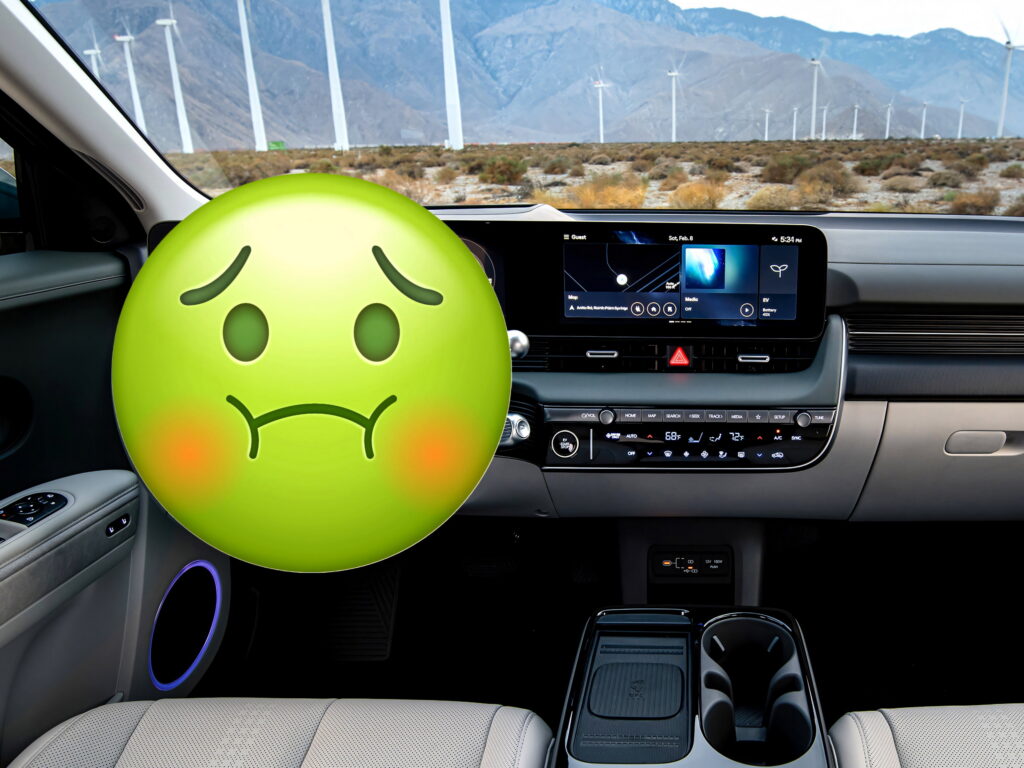Why Do Passengers in Electric Vehicles More Frequently Experience Nausea?
Electric vehicles are quieter, smoother, and more comfortable than internal combustion engine (ICE) cars, making the drive more pleasant for the driver. However, passengers, especially those in the back seats, often complain of nausea. Researchers confirm that this is not imagination—electric cars can indeed cause greater discomfort.
“The higher likelihood of nausea in electric vehicles is linked to a lack of experience. The brain cannot accurately assess the forces of motion because it has only encountered traditional cars before,” explains motion sickness researcher William Emond.
Main Causes of the Problem
One reason is the instant torque of electric motors. Even with smooth pressure on the acceleration pedal, the car can move sharply, causing discomfort. Another important factor is regenerative braking, which slows the car down differently compared to conventional brakes.
An additional aspect is the absence of familiar engine vibrations and noise. The human brain has long been trained to interpret these signals, and in electric vehicles, they are absent. This can cause a discrepancy between what the eyes see and what the vestibular system feels.
How Is the Problem Being Solved?
Manufacturers are already working on solutions. Among the ideas is the use of dynamic interior lighting that could visually cue passengers about changes in motion. It is also important to refine the settings of the accelerator pedal and regenerative braking for a smoother ride.
Over time, as people become accustomed to the specifics of electric vehicles, the problem may become less relevant. For now, drivers are advised to use eco-mode for softer control, and passengers are advised to avoid reading while the vehicle is in motion.
Interestingly, similar symptoms are observed not only in electric cars—many people experience discomfort in airless transportation or while using virtual reality. Technologies are developing faster than our bodies can adapt, creating new challenges for engineers and neurobiologists.

